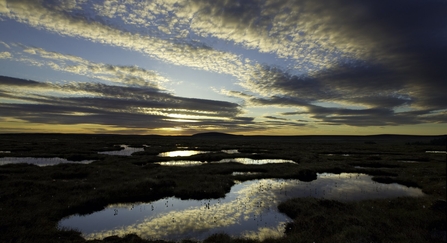New analysis by The Wildlife Trusts has calculated the shocking impacts of extracting peat for use in horticulture.
The analysis estimates that as much as 31 million tonnes of CO2 could have been released into the atmosphere since 1990, as a direct result of using peat in gardening, and its use by professional growers of fruit, vegetables, and plants.
The campaign to stop peat extraction took off in the 1990s but only now are the UK and Welsh Governments conducting a public consultation on ending the use of peat in the retail sector in England and Wales by 2024. The Wildlife Trusts believe we cannot wait this long.
As well as analysing the impacts of peat extraction in the UK, The Wildlife Trusts found that the UK ‘offshores’ most of its peatland emissions and damage to wildlife to the countries who dig peat up to sell it in the UK. Currently, emissions from these imports are not counted in the UK's greenhouse gas emissions figures.
Despite thirty years of campaigning against extraction and increased public outcry, peat continues to be sold in vast quantities for amateur and professional horticultural use, with huge consequences for nature and climate.
Industry progress towards peat-free alternatives has been slow and inconsistent, and between 2018-19 peat consumption in the UK declined by just 2.3%, before rapidly increasing by 9% as lockdown drove more people to buy compost for gardening.
On average, annual UK peat sales would fill 29,000 large shipping containers and could release up to 850,000 tonnes of CO2 .
In 2020 alone, nearly 900,000 cubic metres of peat were extracted from UK soils, with a further 1.4 million cubic metres of peat imported from Ireland and the rest of Europe. A total of just over 2.29 million cubic metres of peat were dug up to be sold in the UK market in 2020, with a small quantity also being exported to other countries.
If peat is left undisturbed – in bogs, not bags – this quantity of peat could have stored approximately 238,000 tonnes of carbon for millennia to come. However, once peatland habitats are disturbed for extraction, stored carbon becomes carbon dioxide (CO2) and is lost to the atmosphere forever, contributing directly to climate change. The peat extracted for UK horticulture in 2020 could release up to 880,000 tonnes of CO2 over its lifetime as a growing medium. 880,000 tonnes of CO2 is equivalent to driving an average passenger car 2.2 billion miles – to the moon and back more than 4,600 times.

